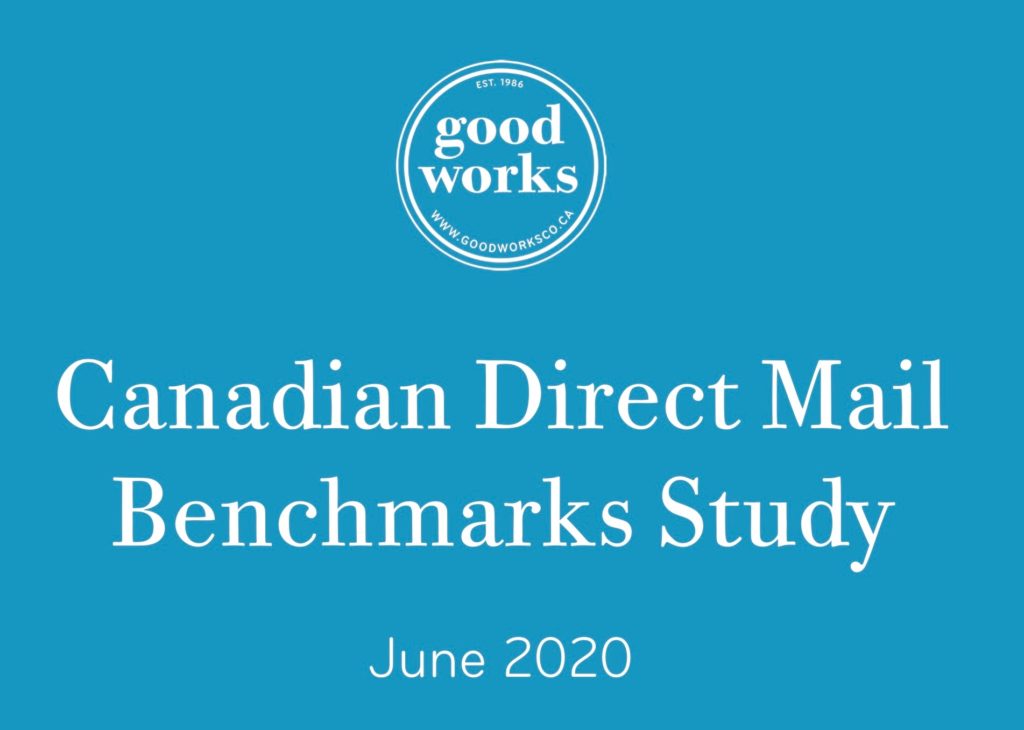
(June 19, 2020) From the days when charities began using direct mail to sell child sponsorship, the fundraising channel has had a solid place in the charity fundraiser’s toolbox.
In the past decade, many charities faced challenges to their direct mail programs from changing demographics, the increased focus on major gifts, and a crowded market. It became more expensive to acquire a donor through direct mail.
But despite increased pressure, billions of dollars in charitable donations continue to be sent through the mail—and trigger online donations—each year. And research indicates if a person is donating to one charity, they are likely to be supporting seven charities.
Goodworks, an Ottawa-based company specializing in individual giving, has just released a report on Canadian trends in direct mail. It is a report based on data gleaned from the 2019 data of 52 charities from the Nature Conservancy to the North York Harvest Foodbank. Collectively, the charities sent more than 11 million pieces of direct mail and raised more than 40 million dollars.
“The idea that direct mail is for old people is one of the myths about direct mail” says Fraser Green, principal and chief strategist of Goodworks. “The research we did for State of the Direct Mail Nation has demonstrated that younger Canadians, specifically, Millennials and Gen xers, are giving through the mail in larger numbers.”
“[I hear others say] it’s a waste of money,” says Melanie Scholz, philanthropy counsel at Goodworks. “But this study demonstrates that direct mail donors are loyal donors… and if you do it right, direct mail is a really good way to engage your donors and foster a high level of loyalty and dedication.”
The report provides an answer to the question of ‘how are other organizations doing?’
Eight metrics were used.
“We’re first and foremost measuring your donor behaviour here,” the report states. “Perhaps the most important use of this report is to help you identify, and work to correct, the aspects of your program that are lagging behind, and to leverage and continue to invest in the areas where you have a competitive advantage.”
Ultimately, the report underlines that “in an increasingly fragmented marketplace, and in an increasingly multi-channel environment, you also need to make a solid business case for the tactics your organization needs to employ.”
Some of the highlights include:
- Direct mail revenues grew in 2019 by more than 5% from the previous year
- Direct mail donors are loyal donors. The study found an average renewal rate of 66.46%
- The biggest gifts go to the smallest charities
- Programs with acquisition mailings fared better overall
In terms of response rate statistics, the study revealed:
- The average response rate for a donor (house) mailings is 7.36%
- The average response rate for an acquisition mailing is 0.87%
- The average donation for a donor (house) mailings is 84.82
- The average donation for an acquisition mailing is 62.98
- The cost to acquire a first-time donor is 78.87
- Donors on average give 1.62 donations a year
“There is no doubt that the trend in recent years has been toward larger gifts coming from fewer donors – and major (and transformative) giving has certainly been generating the lion’s share of attention,” says Green.
“Yet, more than a third of Canadian adults, including lots of Millennials and Gen Xers, give to their favourite causes through the mail. Direct mail has always been – and still very much is – the channel by which people give philanthropically, as opposed to get something in return like gaming, special events and product sales.”
COVD 19 has left many charities wondering how they should tailor their direct mail programs to new circumstances.
“We telling our clients to keep mailing,” says Scholz. “But now more than ever, your message has to be meaningful, honest and relevant. Don’t avoid the COVID subject, but don’t fabricate a connection between your needs and COVID if there isn’t one. People want to help others right now – don’t make the assumption that your donors can’t give right now. Let them make that decision for themselves.”
Leave a Reply
You must be logged in to post a comment.